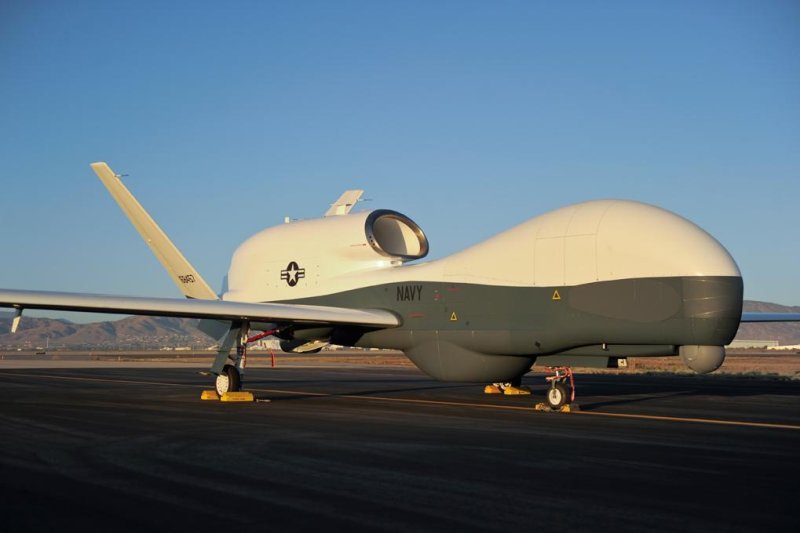Triton unmanned aircraft can fly at altitudes higher than 10 miles, with an operational range of 8,200 nautical miles, over 24 hours at a time. Photo courtesy Northrop Grumman
March 12 (UPI) -- Northrop Grumman was awarded an $89 million contract for sustainment and engineering support for the MQ-4C Triton unmanned aircraft surveillance system.
The contract also involves technical expertise of field service representatives, logisticians and test support to ensure MQ-4C air vehicles and mission control and operator training systems are fully sustained and mission capable, the Defense Department announced Monday.
Work is expected to be completed in March 2020. Forty-five percent will be performed at Patuxent River, Md.; 25 percent in Jacksonville, Fla.; 20 percent at Andersen Air Force Base in Guam and 10 percent in Point Mugu, Calif.
Navy fiscal 2019 aircraft procurement funds have been obligated at time of the award and operations and maintenance in the amount of $69.3 million will be obligated at time of award, including $4 million that will expire at the end of the current fiscal year.
Testing for the system, which was built for the Navy, began in 2015.
The Navy's program calls for 68 aircraft to be fielded, according to Northrop Grumman, replacing the P-3C Orion.
The system consists of the high-altitude, long endurance MQ-4C air vehicle, sensor payloads and supporting ground control stations.
The system provides real-time intelligence, surveillance and reconnaissance missions over ocean and coastal regions as well as continuous maritime surveillance, conduct search and rescue missions. They complement the Boeing P-8 Poseidon maritime patrol aircraft.
The aircraft can fly at altitudes higher than 10 miles for more than 24 hours, with an operational range of 8,200 nautical miles.
The drones can also descend and ascend through harsh maritime weather environments to gain a closer view of ships and other targets at sea.















